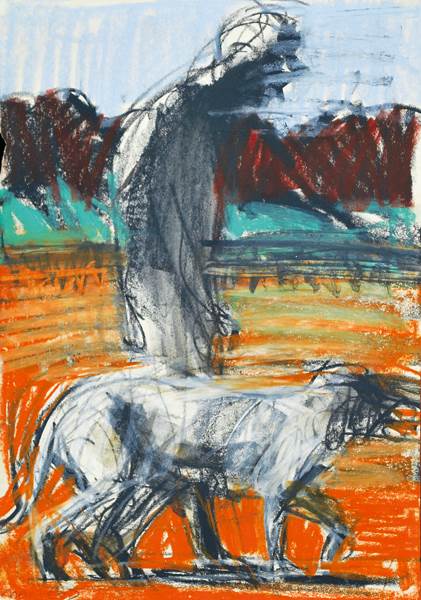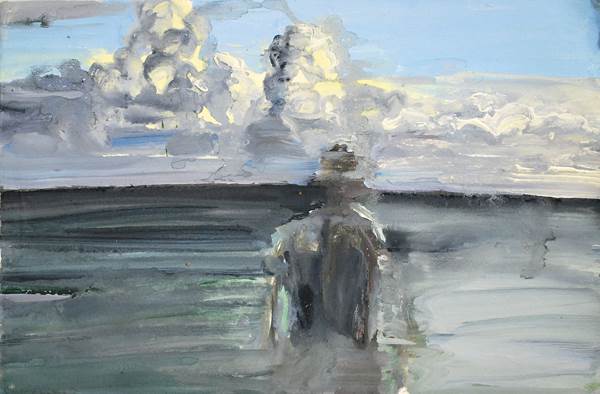Known for his expressive, large-scale landscapes, and figures of ‘the everyman’, New Zealand born artist Euan Macleod is taking a step out of the ordinary, with his latest exhibition at Watters Gallery, a series of works on paper.
How did this series come about? Are these new works, or a combination?
I don’t normally show works on paper so much, so this exhibition is specifically about exhibiting works on paper rather than canvases. Generally, there seems to be more of an emphasis on exhibiting ‘finished works,’ whereas I think it’s interesting that works on paper; studies and drawings, can have the bare bones of something. Studio works can often hide that process of working out an image.
What is the importance of drawing to your practice?
In my work I like to have that working out in the work. Quite often I will work straight onto the finished canvas, but now and then I do work on paper. Generally, I work on paper when I travel, and I can’t carry oils, but these works aren’t that – they are specifically studio-based drawings. Some are with acrylic paint, as this is faster than crayons.

Are you attracted to the immediacy of the medium?
I’m wary of being too prepared. Sometimes there’s a sense that all the working out happens in the drawing, and that painting becomes an enlarging and translating process. I like to surprise myself in the work, and not have too great an idea where it is going to go. There can be large changes in the work. I did a lot of work with acrylic paint earlier in the year, on paper, and so these will form the basis of quite a few of these works.
I don’t have a system worked out where I always start with a drawing – but I do like paper as a surface to work on, and I tend to use polyester canvas, which has paper-like qualities in itself. There is a freedom and freshness in working with paper, there is not as much risk materially, and it means that you can take more risks. With acrylic paint you can be quite spontaneous, and it doesn’t have the health or archival problems that oil does. You can be quite haphazard, try things out. With drawing and paper there is a lovely sense of trial and error.
I tend to overwork things – almost try and beat them into submission. So even my works on paper are quite built up, not a lot of paper left.

Is accessibility a factor with drawing in this current climate do you think?
I think when it gets tight, and it becomes harder to sell the major works, people start looking at alternatives like prints and works on paper, and traditionally these have been a lot cheaper. Sometimes it seems strange that they are, you can put as much work into something on paper as something on canvas, and yet traditionally, the works on paper sell for a lot less than the works on canvas. But I guess it always surprises me that works on paper are so accessible cost wise, but you are also getting that germ of an idea from the artist – you are getting where they are formulating their idea. It is a fantastic opportunity to have that – it is an exciting thing.
Watters Gallery
15 January to 1 February, 2014
Sydney
Untitled, 2013, crayon on paper, 30 x 21cm
Osvaldo, Puerto Rico, 2011, acrylic on paper, 38 x 57.5cm
Courtesy the artist and Watters Gallery, Sydney


